My Sugar Glider Is Sick
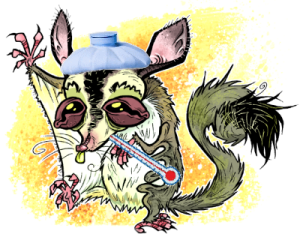
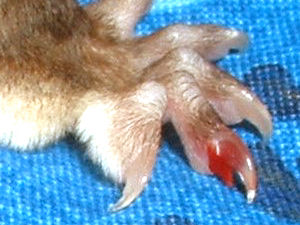
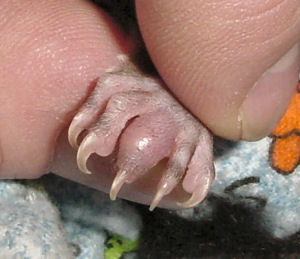
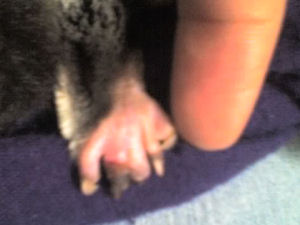
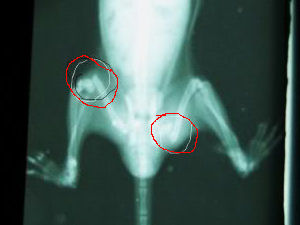
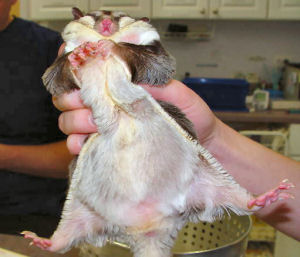
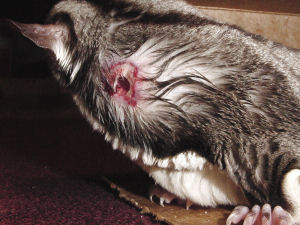

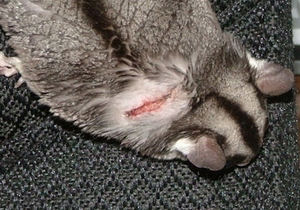
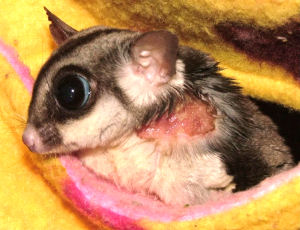
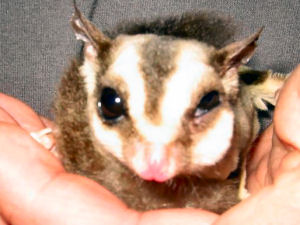
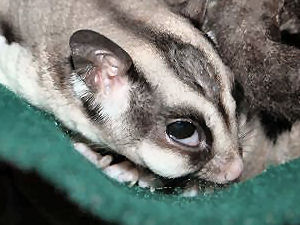
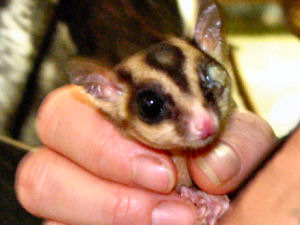
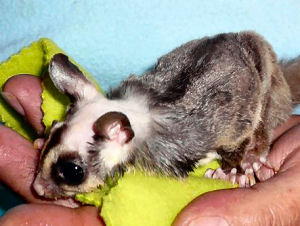
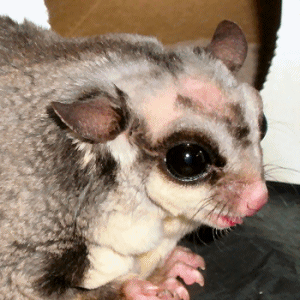
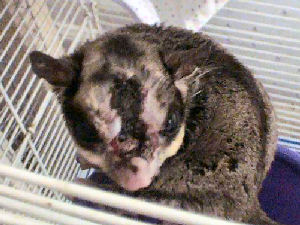
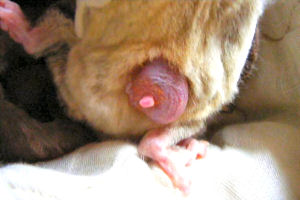
| My Sugar Glider Is Sick!
I
never thought it would happen to me, but it did. My sugar glider got
sick and I was barely prepared to handle the problem even
after ten years of owning sugar gliders. Because of my own
experience,
I thought it wise to share what I learned in order to help you be
ready for some of the things that may very well happen to YOU.
These
images you see are just a few examples of things that can happen
to your pet. Sugar gliders are not the easy to keep animal that so many
people claim they are. It is common for any of these maladies
listed below to happen to YOUR pet even when kept and cared for
properly. As a sugar glider owner,
you absolutely must be aware of the various health issues that your animal faces and be prepared to prevent when possible and respond when needed.
Proper
keeping helps to minimize many possible health issues, but some
can happen regardless.
A simple unmanaged nail
caught in a pouch can painfully rip the nail from the flesh and
get infected or become necrotic,
or it can also allow the animal to break and mangle its fingers or
limb which can lead to possibly chewing it off to get free.
This happens. Sugar gliders are
smart little critters but they are not smart enough to calm themselves
to figure out the best way to get free, they simply freak out and
yank, yank, yank and bite, bite, bite.
There are actually a lot of dietary issues including obesity, malnutrition and hypocalcemia.
A simple bite from another animal in the cage can
turn into a hole, an open wound, stretched skin, infection and
eventually death. An
average person might think that a simple bite to the skin would scab up
and heal but it doesnt. One of the many things that an owner must know
about their sugar glider is that they fixate on things. An open wound
is an invitation to clean it. If the animal can reach it on its own, it
will do so and will end up making the issue much worse than it would be
when left alone. If the animal cannot reach it, others in the cage will
jump at the chance to continually clean it, and in doing so will
stretch and rip and remove the skin thusly making the wound much more
severe and life threatening. The first step in addressing any wound is to remove the animal
from a group cage and also use an e-collar
if necessary to prevent self mutilation. An open wound means a month or more of solitary
confinement so the owner must have extra cages and supplies available
for this possibility. The same
holds true even for wounds closed by a vet. Glue and stitches are foreign to
the animal and will immediately be ripped out making the wound even
worse than original. The owner must find a way to keep the animal and
others in the cage from grooming the area until it can heal closed with no scabs.
Overgrooming is when the animal presents with a stereotypy
in the form of endlessly grooming itself in a specific area which wears
that area down to the skin or possibly much worse including self mutilation. This behavior often
arises from mental stress created from improper keeping. A small cage,
loneliness, poor diet, lack of exercize are all things that must be
addressed. Often adding an exercise wheel, ongoing mental stimulus, larger cage or a cage friend will resolve or prevent these kinds of issues.
A tail
is very fragile, and once it has been bitten, it has also been
broken. It will begin to dry up and will need a surgical amputation to prevent infection and death. Very rarely can a tail be repaired.
A bump under the eye is most likely a dental abscess which if left alone can
burst and cause necrotic tissue and death. The eye may often have to be
removed..
THE LIST GOES ONThe possible health issues are expansive. Here are some items to become familiar with:
Unmanaged nails get caught and ripped off
Toes swollen, bitten, infected, broken
Mating or fighting wound
Puncture wounds on patagium
Tail biting, chewing, amputation
Dental abscess
Eye scratch, penetration, ulcer, infection
Ear bites
Hind leg paralysis
Malnutrition and dietary issues
Overweight
Overgrooming and other mental/stress issues
Self Mutilation
Accidents around the house
Other household animal/pet attacks
Urinary tract infection
Oral tumors
Mastitis
Giardia
Parasites
Inverted or swollen pouch
Prolapsed cloaca, genitals, bladder
Teeth trimming, Wing clipping
Please
learn as much as you can about this animal before jumping into ownership and be ready to
prevent and also respond when necessary. Sugar gliders will need vet
attention in their lives for one reason or another so you must be able
to provide that. If
you see signs of any of the maladies presented here, please go see a
vet
immediately.
These items listed above are brief and only a few of the many things a
sugar glider owner must know to be successful. This post
is designed to start you on the
quest for
learning. You are welcome to visit the Sugar Glider Encyclopedia
and come read through, search and join in any of the forum
discussions. And the sugar glider chatroom is often busy in the evenings for real-time interaction with other owners.
You are welcome to come discuss this article to add/modify some of the content or simply leave a comment.
Life is full of questions, never be afraid
to ask any of them. Please never stop learning and always share what you learn with others.
|
NOTES
You are welcome to repost this article on Craigslist or any other forum or site. You can find the html source HERE for easy copy and pasting.
|
